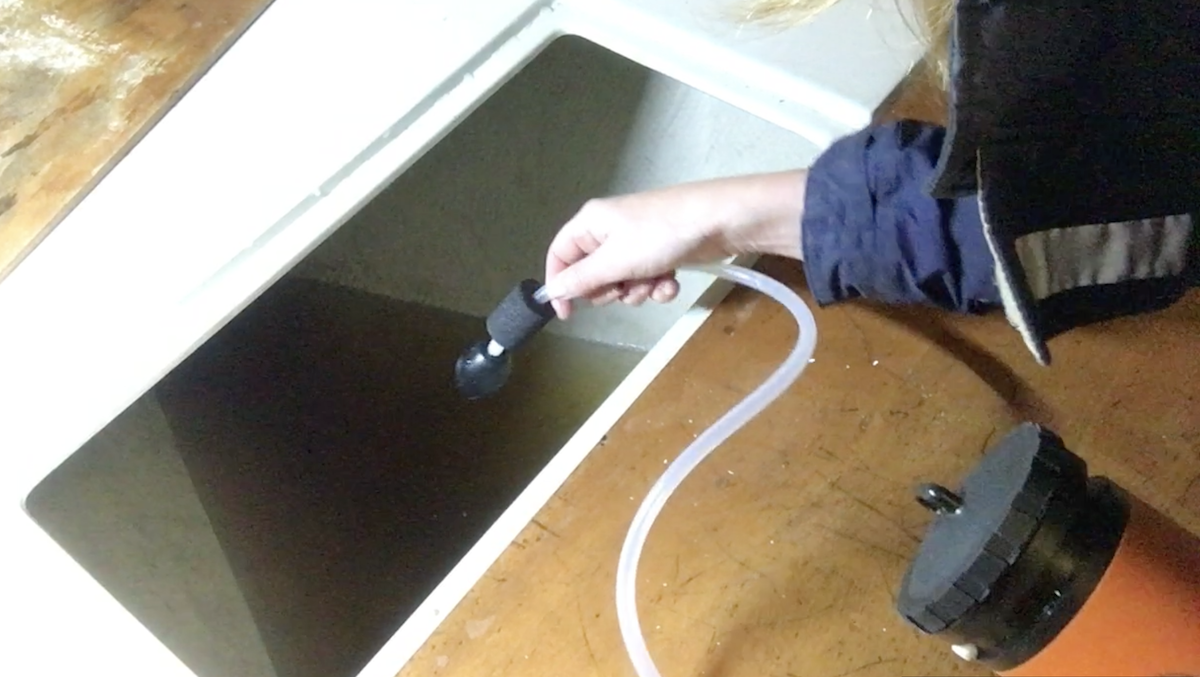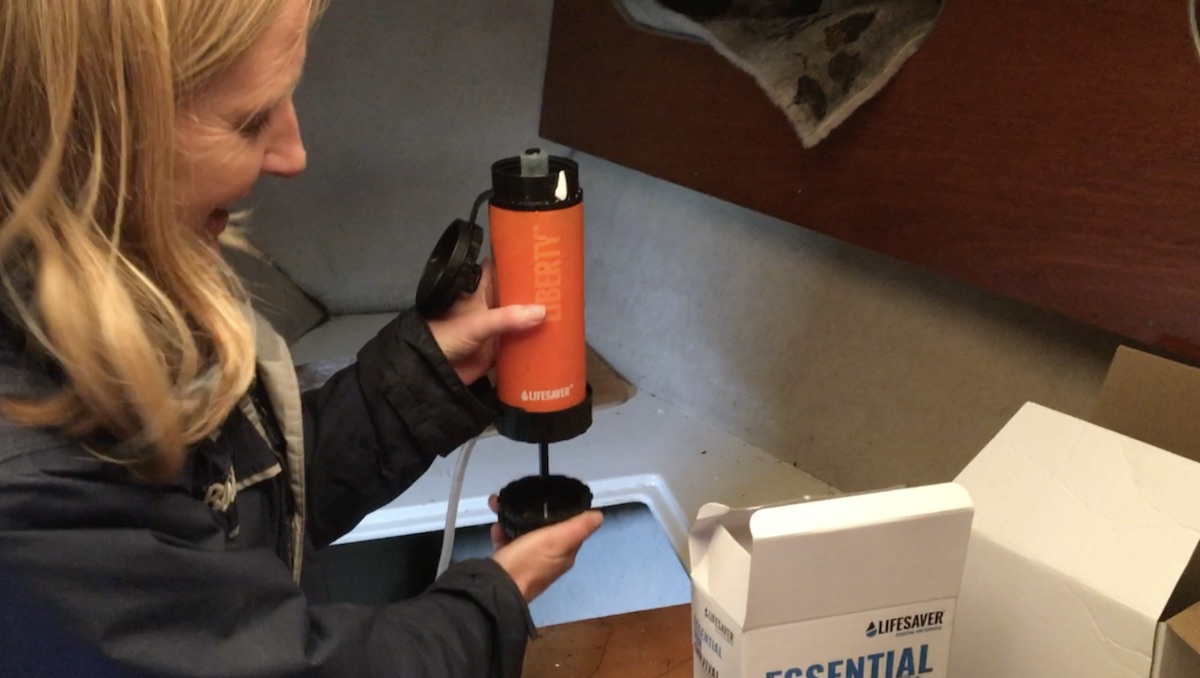Ali Wood drinks 2-year-old stagnant rainwater from leaky project boat Maximus... and survives to tell the tale
Drinking bilge water isn’t something you do every day, but it seemed like a great opportunity to test the Lifesaver Liberty filtration bottle. After all, two years of stagnant brown rainwater has got to put a piece of kit like this through its paces.

Water bailed out from Maximus’s lockers. Good to drink?
If you’re not confident with the quality of your tank water – or maybe you’ve anchored somewhere remote and need to drink from a spring or river – the Lifesaver Liberty is a great solution. The portable filtration bottle is said to remove a minimum of 99.99% of dangerous viruses, bacteria and cysts from any fresh water source. At just 425g it’s compact and lightweight, and holds 400ml, so is ideal for trekking, camping or taking out on a dinghy or kayak expedition.
I decided to test the Lifesaver Liberty on our PBO Project Boat, Maximus. The Maxi 84 had been laid up in a yard for two years and was leaking badly through vents, windows and loose deck plugs. The water had gathered in the lowest parts of the boat, so after fishing out a soggy spinnaker from the locker, I decided to drink the water!

Before using the filter bottle, I primed it by filling it with clean water for 5 minutes then pumping it through. Word of caution: you need to permanently leave around a centimetre of water in the filter cartridge with the pump tightened and the water flow valve shut. Failure to do so will cause the membrane to dry out, costing you £50 for a new cartridge!
What’s nice about the technology is that it only uses pressure to force the water through the membrane, so there’s no strenuous sucking or waiting around for chemicals to do their work. Plus, it can treat 2,000 litres of water before the filter needs replacing.
Once onboard Maximus I attached the scavenger hose. You don’t have to use this – you could scoop or pour the water into the base – but at 5m it’s a handy length for accessing hard-to-reach water sources.

I pulled the float down to the end of the hose to keep the nozzle afloat at the top of the water, where it would be ‘freshest’.
After just a couple of pumps, the water bubbled out remarkably clear and the flow-rate was surprisingly fast (1.2 litres per minute). I soon realised, after dribbling it all down my chin (you can watch the video if you want a laugh), that it’s easier to sip from the rim and not the spout.

However, you could also pour it into a cup or even screw the bottle onto a wide-mouth bottle (not included) such as a the Nalgene.
At £125 it’s a fair investment for any boat owner, but compared to a dicky tummy, hospitalisation or worse from drinking unsanitary water, I can certainly see the benefit – and now at least I can add ‘Amazon River’ to my Maximus bucket list.

The Lifesaver Liberty portable bottle and the Lifesaver Cube
A larger version of the water filtration system is also available. The 5-litre LifeSaver Cube was originally developed in conjunction with Oxfam, and is extremely robust. Perfect for the galley, it works using the same technology as the Liberty, and as well as removing all the nasties from the water, it also takes away the tastes and smells from the treated water. I haven’t tried this one yet… but there’s still plenty of water in the pilot berth locker, the bilges and the anchor locker to drink. Yum!
Lifesaver Liberty portable filtration bottle deals
Buy the 5l LifeSaver Cube on Amazon (UK)
Buy the Luceco LED inspection torch from Screwfix
For more info on Lifesaver products, visit https://iconlifesaver.com



